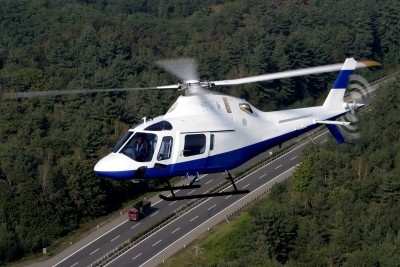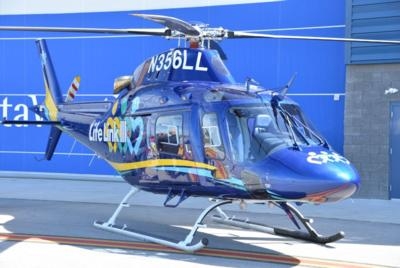Tue, Dec 29, 2020
AD 2020-26-10 Requires Revising The Existing Rotorcraft Flight Manual (RFM)
The FAA is adopting a new airworthiness directive (AD) for all Leonardo S.p.a. (Leonardo) Model A119 and AW119 MKII helicopters.

This AD requires revising the existing Rotorcraft Flight Manual (RFM) for your helicopter and installing a placard to prohibit intentional entry into autorotation. This AD would also allow replacement of an affected fuel control unit (FCU) as an optional terminating action for the RFM revision and placard installation. This AD was prompted by reports that certain FCUs may not have been calibrated to specification during overhaul. The actions of this AD are intended to address an unsafe condition on these products. This AD is effective February 1, 2021.
Supplementary Information: The FAA issued a notice of proposed rulemaking (NPRM) to amend 14 CFR part 39 by adding an AD that would apply to all Leonardo Model A119 and AW119 MKII helicopters. The NPRM published in the Federal Register on June 11, 2020 (85 FR 35602). The NPRM proposed to require revising the Limitations Section of the existing RFM for your helicopter and installing a placard to prohibit intentional entry into autorotation. The NPRM also proposed to allow replacing affected FCUs with non-affected FCUs as an optional terminating action for the RFM revision and placard installation. The proposed requirements were intended to address certain FCUs that may not have been calibrated to specification during overhaul, which can lead to N1 fluctuations, hung engine starts, and the inability to recover power during autorotation training, and possibly result in reduced control of the helicopter.

The NPRM was prompted by EASA AD 2018-0124, dated June 5, 2018, issued by EASA, which is the Technical Agent for the Member States of the European Union, to correct an unsafe condition for all Leonardo Model A119 and AW119 MKII helicopters. EASA advises that certain FCUs may not have been calibrated to specification during overhaul, and that this condition, if not corrected, can lead to N1 fluctuations, hung engine starts, and the inability to recover power during autorotation training, possibly resulting in reduced control of the helicopter. To address this unsafe condition, the EASA AD requires amendment of the applicable RFM and installation of a placard to prohibit intentional entry into autorotation. The EASA AD also allows removal of the RFM limitation and placard after replacement of an affected FCU.
More News
“We have seen astounding demand for the G800, and the entire Gulfstream team is excited to begin making deliveries to our customers. The G800 is entering service with extraor>[...]
Aero Linx: Recreational Aviation Australia (RAAus) Recreational Aviation Australia is progressively working towards improving safety outcomes through a holistic approach to safety >[...]
Classic Klyde Morris From 11.07.16 (and Remembering Bob...) FMI: www.klydemorris.com>[...]
Also: GADFLY AI-Driven Engine Analysis, Knockoff Iranian Drones, Russian Surveillance, 40 NASA Missions Chopped This year’s Zenith Homecoming event will soon be taking off at>[...]
Also: H55 Completes American Tour, Robinson Trade-Ins, Retired AV-8B Harrier, NS-35 Mission Organizers of the iconic annual Air Race Classic will soon be opening registration for t>[...]
 Aero-News: Quote of the Day (08.28.25)
Aero-News: Quote of the Day (08.28.25) ANN's Daily Aero-Linx (08.28.25)
ANN's Daily Aero-Linx (08.28.25) Classic Klyde Morris (08.25.25)
Classic Klyde Morris (08.25.25) Airborne 08.25.25: Zenith Homecoming, VP Racing, Affordable Flying Expo 2025
Airborne 08.25.25: Zenith Homecoming, VP Racing, Affordable Flying Expo 2025 Airborne 08.22.25: ARC Spinoff, Nat'l Championship Air Races, Hawkins Accident
Airborne 08.22.25: ARC Spinoff, Nat'l Championship Air Races, Hawkins Accident




